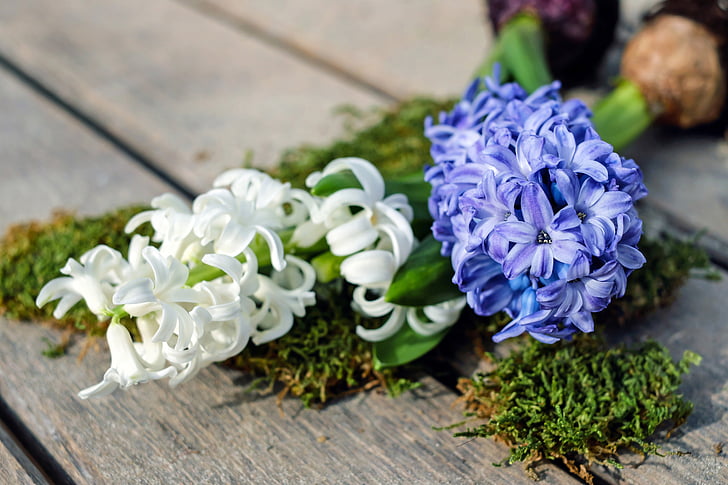There’s a certain magic in the air when you bring a fresh bouquet of garden flowers into your home. The vibrant colors, the delicate petals, and the intoxicating fragrance can transform any space into a serene sanctuary. Yet, the joy of a beautiful bouquet can be short-lived if those lovely blooms start to wilt and the water turns murky. But fear not, fellow flower enthusiasts, for I am here to share the secrets to keeping your garden bouquets fresh, fragrant, and fabulous for as long as possible.

The Science of Keeping Cut Flowers Fresh
The key to longevity in cut flowers is understanding their needs and preemptively battling the forces that lead to their demise. Bacteria, dehydration, and ethylene gas are the main culprits behind wilted petals and foul-smelling vase water. Bacteria clogs the stems, preventing water absorption and accelerating decay. Dehydration, from insufficient water or blocked stems, leads to wilting. Ethylene gas, emitted by ripening fruit or decaying flowers, speeds up aging.
Let’s debunk a common myth: smashing the stems. Contrary to popular belief, this practice does not aid in water uptake. In fact, it’s quite the opposite. Smashing the stems damages the vascular system, which is essential for transporting water, and exposes the plant tissue to water, leading to rot. So, let’s put that old wives’ tale to rest and focus on what really works.
When cutting flowers from your garden, timing is everything. The morning is when stems are most hydrated, making it the ideal time for cutting. Once cut, place them directly into water to prevent air from entering the stems, which can cause blockages.
Whether your bouquet is homegrown or store-bought, the following tips will ensure its longevity:
Begin with a clean vase to prevent bacteria from contaminating your flowers.
Strip any leaves that will sit below the water line to avoid rot and bacteria.
Cut stems at a 45-degree angle using a sharp knife or garden pruners. This increases the surface area for water absorption and prevents the stems from resting flat against the vase bottom, which can cause blockages. For woody stems, scrape away some bark to facilitate water uptake.
Use flower food. The packets that come with bouquets contain a mix of sugar, citric acid, and bleach, which work together to lower the water’s pH and inhibit bacterial growth. Be sure to follow the dosing instructions to avoid damaging your flowers.
Add a booster, such as citrus soda or clear spirits like vodka. Soda provides sugar and maintains acidity, while vodka helps prevent spoilage.
Keep your flowers away from drafts, direct sunlight, and ripening fruit to avoid exposure to ethylene gas.
Regularly clean the vase, remove fading flowers, trim the stems, and refresh the flower food and booster every other day.
Refrigerate your bouquet at night to slow down the aging process, just like you would with food.
By following these simple steps, you can extend the life of your garden bouquets and keep them looking as fresh as the day they were picked. But the journey to a perfect bouquet begins long before the flowers are cut. It starts in the garden, with the selection of blooms that will make up your stunning arrangement. In the next section, we’ll delve into the world of cultivating and choosing the perfect flowers for your bouquets, ensuring that every snip from the garden results in a masterpiece of natural beauty.
Cultivating and Choosing the Perfect Blooms for Your Bouquet
Creating a bouquet from your own garden is like painting with nature’s palette; it’s an art form that begins with the careful selection and cultivation of your blooms. The joy of a garden bouquet is not just in the final display, but in the process of growing and nurturing the plants that contribute to it. So, let’s dig into the earthy details of cultivating and choosing the perfect flowers for your homegrown masterpiece.
When you’re planning a garden with the intention of cutting flowers for bouquets, consider the variety of shapes, sizes, colors, and textures you’ll want. Diversity in your garden will provide you with a rich tapestry of options for creating arrangements throughout the growing season. Start with the basics: most flowering plants require six to eight hours of sunlight daily, healthy soil, and good drainage. But beyond that, you’ll want to select plants that not only thrive in your specific climate and soil conditions but also meet your aesthetic and practical needs for bouquet-making.
For stunning cut flowers, you can’t go wrong with classics like black-eyed Susan, clematis, dahlias, foxglove, hydrangeas, roses, sunflowers, and zinnias. These blooms provide a range of colors and forms that can serve as focal points or complementary accents in your arrangements. If you’re looking for flowers that will give you a long blooming season, consider planting catmint, geraniums, lantana, penstemon, Peruvian lilies, red hot poker, and sage. These hardy plants will keep your vases filled with fresh flowers for months on end.
Attracting birds, bees, and butterflies to your garden not only supports local ecosystems but also adds a layer of lively beauty to your space. Plants like asters, campanula, cape plumbago, clarkia, coreopsis, lamb’s ear, lobelia, nicotiana, and verbena are excellent for this purpose. And if you’re in a region with water restrictions or simply want to conserve, opt for low water use plants such as coneflowers, lavender, statice, windflower, and yarrow.
Deer can be a gardener’s nemesis, munching away on tender blooms. To keep your flowers safe, choose deer-resistant varieties like aster, catmint, dahlias, foxglove, lantana, penstemon, Russian sage, and yarrow. And for those who love the rustic charm of dried flower arrangements, hydrangeas, lavender, roses, scabiosa, statice, and yarrow dry beautifully and can be enjoyed long after the growing season has ended.

Roses deserve a special mention. They may require a bit more care and water than some other plants, but their continuous blooms from spring to fall make them a worthwhile investment. With a plethora of varieties available, you can choose roses that fit your specific needs, whether you’re looking for disease resistance, a particular color, or a strong fragrance.
Let’s talk about the actual cutting and arranging. To ensure your flowers are in prime condition for your bouquets, follow the advice of experts like Debra Prinzing. Use clean, sharp tools to cut your flowers at a 45-degree angle early in the morning when they’re most hydrated. Immediately place them in a container of room-temperature water, and be sure to strip any leaves that will be submerged to prevent rot.
When arranging your flowers, play with different heights and textures to create a visually interesting display. Remember to place your bouquet in a cool area away from direct sunlight to prolong its life. And don’t forget to change the water and re-cut the stems every couple of days to keep your flowers looking their best.
If you’re ever in a pinch and your garden isn’t in bloom, don’t hesitate to spruce up store-bought flowers. With a little creativity and some additional greenery or complementary flowers, you can transform a simple bunch into a stunning arrangement. Whether it’s the peonies you’ve been nurturing with prayer or the tulips that herald the arrival of spring, each flower has its own story and contributes to the unique beauty of your bouquet.
The flowers you choose to grow and how you care for them can make all the difference in the bouquets you create. From the soil to the vase, each step is an opportunity to infuse love and personality into your arrangements. So, embrace the joy of gardening, and let the flowers you cultivate be a reflection of your passion and creativity. After all, there’s nothing quite like a bouquet straight from the garden to remind us of the simple pleasures and natural beauty that surround us.
Related posts:
Making cut flowers last well beyond Mother’s Day
Master Gardeners: Nothing quite like a freshly picked bouquet
Easy Flower Arranging Tips Using Store Bought Flowers





